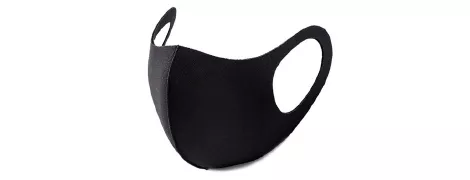Face Masks Buying Guide

N95, FFP, Surgical…there is a lot of confusion around the different masks that are available to use. We have pulled together the information from a number of leading scientific sources to help you understand the options available*. There are a number of different types of mask, but the key factor is whether they are beneficial in protecting you, protecting others or both. The table below summarizes the types of masks against these criteria
Face Mask overview
| Mask Type | Can help in preventing spread | Suitable for |
| Disposable Masks | Yes | Medical / Non-medical |
| Reusable masks | Yes | Non-medical |
| Disposbale dust mask FFP1 | Yes | Medical / Non-medical |
| Disposbale dust mask FFP2 & FFP3 | Yes | Medical |
Our Offers
Different types of facemasks
There is a wide variety of different face masks available. Facemasks generally can be divided into 3 groups. But which facemask is best suited to your needs? Below we have explained the most important differences per product type.

Disposable Masks
Disposable masks usually flat and rectangular with pleats or folds with a metal strip that can be formed to your nose.
disposable, loose-fitting face masks that cover your nose, mouth, and chin
protects the wearer from sprays, splashes, and large-particle droplets
prevents the spread of potentially infectious respiratory secretions from the wearer to others
often described as civilian, medical, surgical, EU classifications are – Type 1, 2, 2R.
| Mask Type | Bacterial Filtering Efficiency | Fluid repellence | Usage | EN Number |
| Civilian | >90 | No | Civilian / non-medical | Not EU |
| Type 1 / Medical | >95 | No | General medical | EN14683 |
| Type 2 / Medical | >98 | No | General medical | EN14683 |
| Type 2R / Surgical | >98 | Yes | Surgical where harmful splashes can occur. Sterile. | EN14683 |

Reusable masks
Reusable masks usually made of a woven fabric, often cotton. These can be repeatedly washed making them an environmental alternative to disposable masks.
- Loose-fitting face masks that cover your nose, mouth, and chin.
- Protects the wearer from sprays, splashes, and large-particle droplets.
- Can be anti-microbial (depend on the specifications) and also protect the wearer from dust.

FFP (Filtering Face Piece) Masks
FFP (Filtering Face Piece) Masks also known as disposable particulate respirators. Similar to the N, R and P respirators, they are generally circular or oval in shape and is designed to form a tight seal to your face. Some types may have an attachment called an exhalation valve, which can help with breathing and the build-up of heat and humidity.
| Mask Type | Filtration level | Leakage to the inside | Usage |
| FFP1 | >80% | <22% | This mask is mainly used as a dust mask (home renovations and various types of work) and can help with the prevention of spread from the wearer to others. |
| FFP2 | >94% | <8% | These masks are mainly used in construction, agriculture, and healthcare professionals against influenza viruses. They are currently used for protection against Covid-19. |
| FFP3 | >99% | <2% | These masks protect against very fine particles such as asbestos and can be used for protection against Covid-19. |

